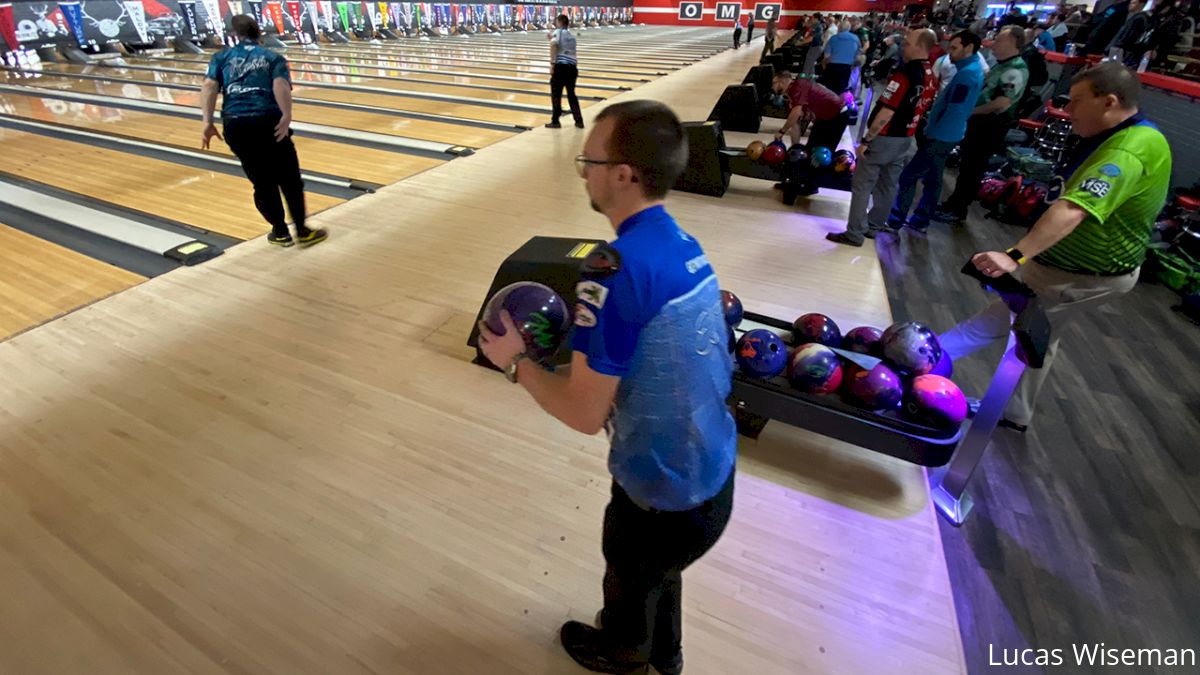Pattern Breakdown: Attacking The 40-Foot TOC Pattern
Pattern Breakdown: Attacking The 40-Foot TOC Pattern
The players will be tackling only one oil pattern – the Don Johnson 40 – instead of the dual pattern setups they have competed on the past three weeks.

Unlock this article, live events, and more with a subscription!
Already a subscriber? Log In
We have made it to the first major of the 2020 PBA Tour season with the PBA Tournament Of Champions taking place at AMF Riviera Lanes in Fairlawn, Ohio, starting Wednesday.
This week, the players will be tackling only one oil pattern – the Don Johnson 40 – instead of the dual pattern setups they have competed on the past three weeks.
The pattern is named after the legendary Don Johnson, who was known for his dramatic 299 game in the title match of the 1970 Firestone Tournament Of Champions. For more about Johnson and his legacy, read here.
The pattern clocks in at 40 feet in length, a ratio of 1.84:1 and an oil volume of 29.07mL.
The oil pattern can dictate a lot on the lane for a bowler. But when it comes to the lane surface just underneath that oil, that is the whole other variable to take in account for the bowlers on the PBA Tour.
The lane surface at AMF Riviera Lanes is a higher friction and softer surface compared to the Brunswick Pro-Anvilane surface that has been used in the past three PBA Tour stops. The AMF HPL lane surface can see more friction early throughout the block, forcing bowlers to really focus on their ball motion.
Choosing an arsenal for this lane surface is critical. Former PBA Player Of The Year and runner-up in last year’s PBA Tournament Of Champions, EJ Tackett, said, “Last year with the bowling balls I threw, the cores I chose were a little bit smaller and the covers were a little bit cleaner.”
Bowling balls with stronger covers and bigger asymmetric cores will read early on the lane, thus providing a flat reaction and no drive through the pins. Past PBA Tournament Of Champions winner Matt O’Grady threw a Roto Grip Hustle Ink, a reactive ball with a very clean cover and a smaller core, to battle through a star-studded stepladder on his way to his first major victory in 2018.
“Whatever your ball speed, axis tilt, or rotation is, you better be consistent in making shots,” O’Grady said after the practice session Tuesday. “Or your adjustments will leave you scratching your head simply because there’s not much room for error with the near flat ratio.
“This pattern requires the player to get their bowling ball rolling before the end of the pattern to maximize area and carry. Bowlers that have more rotation and tilt will need to use more surface to slow down the backend transition due to the 29mL of oil out there.”
Urethane can be a popular option for some players to have their reaction not jump hot off the breakpoint and create strong pin action. Defending TOC champion Jason Belmonte used a Storm Pitch Black, a urethane bowling ball, in the title match to win the 10th major of his career.
Technique will also be a major factor when bowling on higher friction lane surfaces. When asked about his technique to tackle a higher friction lane surface, Tackett noted, “I was able to use my hand to get the ball to slow down rather than using the ball to do that.”
The higher friction surface will mean more focus on touch and precision at the point of release, which will help the ball get through that treacherous front part of the lane to give it a solid roll toward the pocket as transition occurs throughout the block.
This is the first time this season the bowlers will tackle one pattern the entire tournament. It might be a breath of fresh air for some but these bowlers will not back off the pedal against the world’s best this week in Ohio.